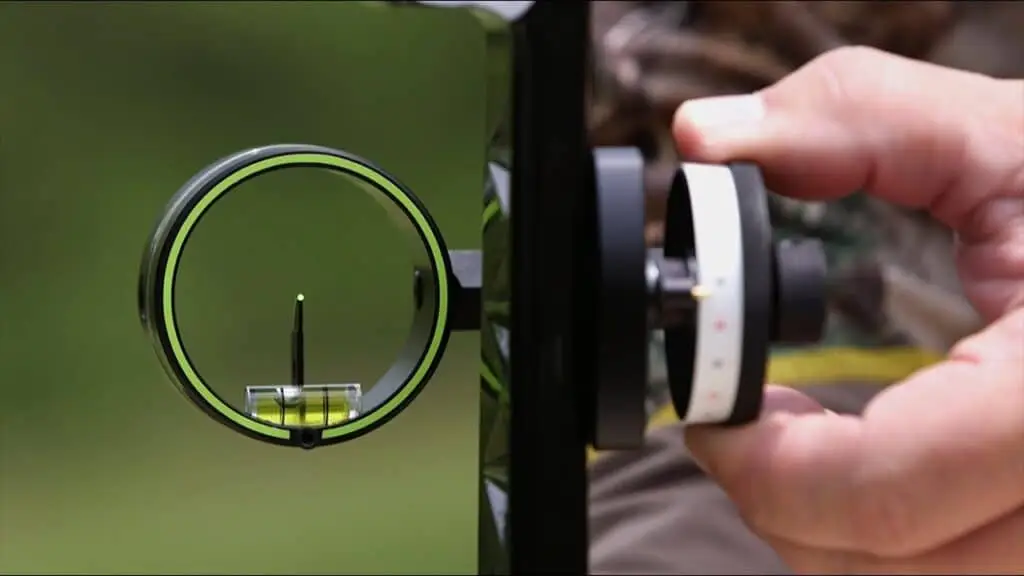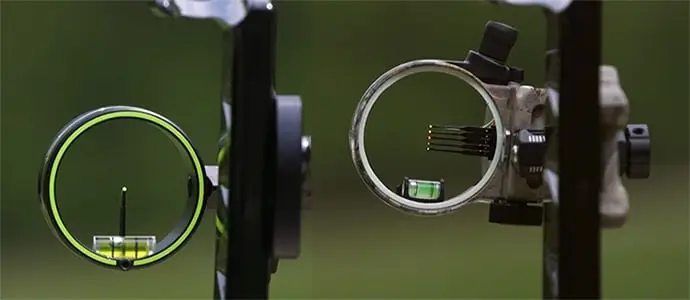Note: Our site links to archery and bowhunting products sold by outside vendors, and we may earn a small commission if you purchase an item after clicking one of these links. Learn more about our affiliate program.
It is important to know that bow hunting is an intricate dance between precision and accuracy.
Whether you’re a seasoned expert or just starting on your archery journey, you’ve probably Googled about the role of bow sights in enhancing your shooting experience before.
These clever accessories are designed to improve your accuracy. They cannot replace your expertise, however it is like the icing on the cake, It can definitely complement your skills and make your archery experience smoother.
So, let’s get to it, shall we?
When Do Bow Sights Work Best?
Bow sights work best when you can accurately estimate the distance to your target, enhancing shot accuracy. They complement your archery skills, making them a valuable accessory for beginners and experienced bow hunters.
Bow sights
First things first, let’s unravel the mystery of bow sights and understand their function.
A bow sight is a very practical accessory that aids archers in reducing shooting errors, enhancing their shots’ accuracy and precision. It’s similar to a rifle sight but tailored for bows, with a few minor differences.
Now, there are two primary types of bow sights to consider:
- Fixed Pin Bow Sights
Picture a stack of pins with pre-set distances, usually 20 to 60 yards. These fixed-pin bow sights are a top choice among bow hunters. It is so easy to use, and no complicated adjustments need to be made. However, they can occasionally create blind spots due to the presence of multiple pins.
- Single Pin Movable Slider Bow Sights
As the name suggests, these bow sights have an adjustable single pin. You tweak this pin based on your best estimate of the distance to your target. Archers who favor this type do so to declutter their field of view compared to the multiple pins of other sights.
The Prime Time for Bow Sights
Now, the million-dollar question – when do bow sights work best? The answer, while somewhat subjective, is relatively straightforward. For most hunters, bow sights are at their best when you find yourself in a situation where you can estimate the approximate distance between your spot and your quarry.
Imagine this: you’re perched high in a tree stand or concealed in a blind spot, and your target is in sight. This is the sweet spot for bow sights. Why, you ask? Well, these handy accessories are tailor-made to up your accuracy game regarding estimating the distance. In such scenarios, knowing the distance of your intended target is vital for success.
Aim Like You Were Born to Hunt
While bow sights offer an accuracy boost, mastering the skill of instinctive aiming shouldn’t be overlooked. This method involves targeting your prey with both eyes open and your complete focus on that elusive game.
Instinctive aiming might sound challenging, particularly for less-experienced archers, as aiming without sight can be complex, and hitting a perfect bull’s eye can feel nearly impossible.
However, here’s the catch – Instinctive aiming is a valuable practice tool for honing your distance estimation skills. When you’re out there without a guide or a bow sight, you’ll become adept at adjusting your aim according to the target’s distance.
This skill becomes invaluable when you eventually decide to bring a bow sight into the mix.
The Beginner’s Path: Do You Need a Bow Sight?
For budding bow hunters, it’s often recommended to embark on your archery journey without a bow sight initially. Instead, try instinctive aiming. This approach allows you to develop an intimate understanding of distance assessment.
Once you consistently hit the target without a sight, you’ve laid the groundwork for transitioning to the next level – introducing a bow sight. This incremental approach ensures that you’ve honed your instincts before embracing sight assistance, ultimately improving accuracy.
The Expert’s Take: Enhancing Accuracy
Now, a bow sight can be a game-changer for seasoned bow hunters. A bow sight can improve your accuracy if you can accurately determine the distance to your target. While it’s not an absolute necessity, it’s a tool that can be particularly advantageous when hunting from fixed positions like tree stands or blind spots.
Bow sights aren’t a one-size-fits-all solution; their effectiveness is closely tied to your ability to gauge distances accurately. When you’ve got this skill down pat, a bow sight becomes a potent ally in your pursuit of that perfect shot.
Related – Single Pin Vs Multi Pin Bow Sight
FAQs
- Do bow sights replace the need for skill in archery?
No, bow sights complement archery skills and work best when combined with the ability to estimate distances accurately.
- Are bow sights essential for all bow hunters?
No, beginners can benefit from learning instinctive aiming first, while experienced hunters can use bow sights to enhance accuracy.
- What types of bow sights are available?
There are fixed-pin bow sights and single-pin movable slider bow sights, each with unique advantages.
Final Verdict
In short, bow sights work best when you’ve mastered distance assessment and established a solid shooting stance with your bow. These devices can significantly improve your shot accuracy and greatly complement your archery skills.
Modern archers can achieve remarkable accuracy with single-pin and multi-pin bow sights, depending on the shooting distances and locations. While judging distances takes time and practice, the right sight pin and proper bow handling can pave the way for consistently accurate shots.
So, in the grand scheme of bow hunting, when do bow sights work best? They shine when you can accurately determine the distance to your target. Nevertheless, remember that they’re not a shortcut but a helpful accessory that, when used skillfully, can elevate your archery game to a whole new level.
Happy hunting, and may your arrows always find their mark!




